Scale Model Trees:
Architecture Model Trees
Architecture model trees are essential features of any model masterpieces.
They breathe life, happiness, inspiration, creativity, and freshness into any project.
This guide will help you understand their nature, purpose, origin. It will reveal some key factors that determine which type of model trees to use and how you can source them.
Finally, it will share the different scale sizes and the most commonly used methods and materials.
Read on and discover what appropriate type of architecture model trees to use for your current or next exciting model project.

Contents
Chapter 1:
What are architecture model trees?
Architecture model trees are scaled model versions of actual trees that have the realistic and closest resemblance to their original counterparts in the real world.
They are used to enhance the beauty and highlight the different properties of the structures and spaces around them.
These model trees are powerful and creative visual tools.
Architects, designers, and model makers use them to represent the beauty and grandeur of the natural surroundings of specific buildings, urban or rural structures, interior & outdoor spaces, terrains, development sites, landscapes, etc.
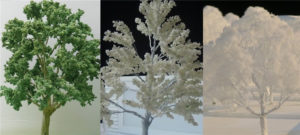
They can come in various shapes, scale sizes, and materials, depending on their intended use.
They can vary from the simple representations like ordinary dowels to exquisitely detailed pieces that are realistically colored, with brown trunks and vibrant green leaves.
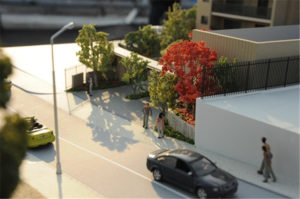
People from all walks of life love them.
Architects, engineers, designers, developers, contractors, students, hobbyists, ordinary bystanders, observers, and even children enjoy watching or working with them.
They are used to present 3D versions of any design project for everyone to work on, learn from, and admire. Hence, architecture model trees are used to delightfully bring a wonderful sense of realism, professionalism, and even playfulness to all architectural models.
They are powerful tools that every architectural firm, design students, educator, and model maker should use when appropriate.
Now, for these models to be authentic scale models, the material and physical properties and other relevant elements must be closely and accurately modeled.
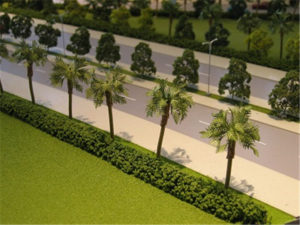
It helps simulate how the model trees interact with other objects within the entire project.
Lighting, shadows, proportions, and perspectives will become more reliable and more relatable to the interaction of real-world trees with the surroundings.
Chapter 1.1:
What Is A Concept Design In Architecture Model Trees?
It refers to a technique or method of shaping a project at critical moments.
You can use it as a sketch as a way of starting things off or mid-process evaluation to expound or refine an idea.
Additionally, concept design in architecture model trees comes in handy when you want to distill a specific project for final presentation.
Technically, a suitable concept design of architectural model trees complements more detailed scales.
In many instances, architectural model trees designs explain the project to you as a client.
Chapter 1.2:
What Are The Primary Types Of Architecture Model Trees?
Ideally, trees used in architectural models come in numerous types.
However, the main ones are often based on particular categories as a way of standardization.
You can have trees based on the following categories;
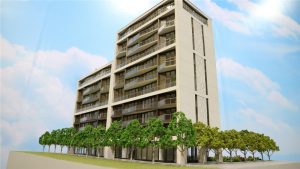
Leaves – Ordinarily, trees based on types of leaves come in two main subcategories, which include deciduous and evergreen trees.
Biological class – Angiosperms and gymnosperms are the types of architecture model trees based on the biological class.
Nevertheless, the common types of trees used in architecture models include the following;
Banyan , Neem, Eucalyptus, Mahogany, Indian rosewood, Tulip, Sal, Cork tree, Maple, Oak, Cedar, etc.
Chapter 2:
How did they originate and evolve?
Making model trees dates back to ancient times. People used them probably as toys or tools to present both abstract and concrete ideas since they are powerful visualization and communication tools.
Throughout history, people have used prehistoric cave paintings, Egyptian hieroglyphs, Greek geometry, technical specifications, or drawings such as those of the Renaissance period. But they were quick to understand that 2D representations have their limits.
Since the prehistoric era, the ancient architects, designers, artists, and builders have often resorted to creating 3D representations of their ideas. Architectural models have been in use since then, with the oldest prehistoric models found in the Tarxien Temples in Malta.
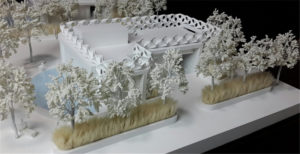
Today, just like any building or structure, trees, landscapes, and natural surroundings can easily be recreated and represented in digital 3D, virtual, and augmented reality.
Yet, nothing beats the physical, tangible, and tactile benefits of having architectural models with realistic architecture model trees in and around them.
Chapter 2.1:
What Are The Features Of Architecture Model Trees?
Ideally, these model trees exhibit different features depending on different elements, such as the material used and modeling method.
Thus, there are no definite features for all architecture model trees.
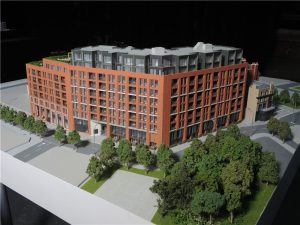
However, one common feature cutting across these models is that they are relatively durable.
Essentially, the material used for making these models is generally sturdy and resistant to numerous environmental factors.
Therefore, they tend to last for a reasonable duration, and thus you can keep them for long.
Another feature is that they are usually appealing to the eye.
Of course, the design process of these models ensures you get the best attractive products.
And this is fundamental because it makes it easy to present it to the clients or potential investors.
Chapter 3:
What factors dictate the type of model trees to use?
Your architecture model trees can come in different shapes and sizes. The kind of model trees you use usually depends on several determining factors. Below is a quick breakdown of some factors that you may wish to consider.
Nature and Purpose of the Model
The first and most obvious factor that determines the type of model trees to use depends on the kind of architecture model you have and your main goal for that model. While creativity is a crucial element, effectively communicating that creativity is even more critical.
For example, models at the very early stages of the design process will usually require less detailed model trees.
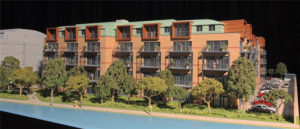
Contrast that with a polished end product such as architectural models displays showcased as centerpieces in buildings and museums.
Types of Client and Budget
Since architectural projects can be costly, money is always a crucial factor that dictates what model trees you can use. Personal or simple student projects on a shoestring budget will often use inexpensive or even free materials lying around to create the scale model trees.
Having paying clients does not necessarily mean you have lots of financial resources to splurge on models.
Some clients value a majestic architectural model while others do not even bother about creating an aesthetically pleasing model but only something that gets their ideas across.
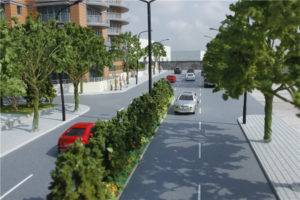
Large residential or commercial clients usually love to invest in breathtaking architectural models.
They know these 3D models are effective selling tools they can use to wow prospects and close deals with buyers. As they say, money makes the world go round. It gets you amazing architecture model trees.
Aside from money, time is another valuable asset that determines what type of scale model trees you should use. Deadlines, like budget, is a motivating factor to get the job done as efficiently as possible.
When you are on a tight deadline, architectural model trees that come right out of the box is the ideal option.
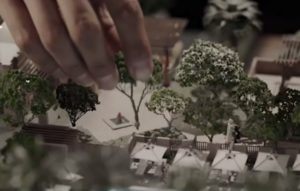
Otherwise, you can create the model trees yourself or order custom-made ones from different model trees specialists, like TL Models.
Availability of Resources
Finally, clients may give you huge budgets and sufficient time to have the best and most realistic trees. But if resources are truly scarce and unavailable, you may have to settle for whatever you find readily available.
However, for creative architects, designers, and model makers, this is usually not a problem but a great opportunity.

In the end, it is not so much about having the resources but using resourcefulness to bring to life the most gratifying architectural model trees one can create.
Chapter 3.1:
Why Are Trees Important In Architectural Designs?
Ideally, trees play significant roles in typical architectural designs.
Some of the benefits of architecture model trees include the following;
Provides A Better Visual Overview Of The Designs
Trees in architectural models give a representation of the actual infrastructure.
Thus, it gives you an overview of what to expect once the project is complete.
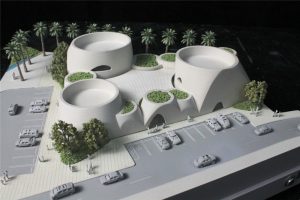
Of course, this is vital since it eliminates unnecessary guesswork that would come once the project begins.
Enhances Proper Planning
In modern infrastructural development, landscaping is fundamental because it determines the overall aesthetics of the project.
Once you have the architecture model trees in place, it becomes easy to plan your infrastructure accordingly.
Ultimately, this enhances convenience and saves time, resources and money.
Gives you Cost and Time Estimates
Ordinarily, when you have architecture model trees, it becomes easy to estimate the cost you are likely to spend to attain the necessary results.
In essence, this model usually provides the type of trees to be planted on the actual infrastructure.
Moreover, you’ll establish the specific time it takes for the particular tree species to grow to maturity.
Therefore, this model allows you to determine whether the particular trees you are considering are necessary.
Create A Serene Surrounding
Architectural model trees provide beauty and allow people within the surroundings to feel peaceful, serene, and tranquil.
Moreover, they provide privacy to the specific property by emphasizing views and obstructing objectionable views.
Chapter 3.2:
What Are The Advantages Of Using Architecture Model Trees?
Typically, architecture model trees provide numerous advantages in facilitating convenient structural construction.
Some of these advantages include the following;
Enhances Time Efficiency In Creating Architectural Scale Models
Designing architectural models is vital in saving several hours of hours common with making scale models.
Ideally, this is important since it ensures you deliver the necessary results within shortest time possible.
Convenient For Making Complex Shapes And Designs
These designs make it possible for you to create complex models, which is advantageous when trying to get a glimpse of the project.
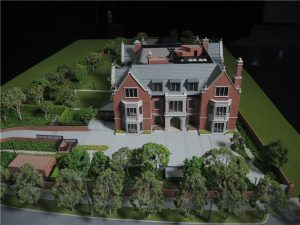
Provides Cost And Time Estimates
Architectural model trees often capture several details, including the general estimate of the cost and time.
This is fundamental because it enhances your planning and making it easy to prioritize events.
Easy To Correct
Ideally, most architectural model trees provide the flexibility to create and recreate the designs accordingly.
You can alter the design and any other details before getting the final object.
In essence, it means you are in full control to establish the best design, which suits your requirements.
Gives You A Better Visualization Of The Project
It is easy to have a glimpse of the architectural designs of the trees for your project.
As such, it becomes easy to effectively communicate the design ideas and eliminating unnecessary guesswork.
Chapter 3.3:
Where Do You Use Architecture Model Trees?
You can use architecture model trees in several infrastructural designs.
Ideally, the essence of this model is primarily to enhance the aesthetics of a particular project model design.
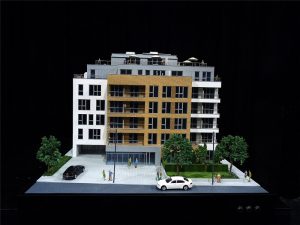
Some of the areas you can incorporate and use this model include the following designs;
- Shopping mall models
- Landscaping models
- Industrial models
- School models
- Faced models
- Hotel models
- Villa models
- Residential houses models
- Hospital models
- Social building models
- Master planning models
- Section models
- Commercial building models
- Airport models
Chapter 3.4:
What Is The Purpose Of Architecture Model Trees?
Technically, the primary purpose of architecture model trees is to depict conceptual and real-world visuals for a proposed design.
In essence, this model comes in handy when marketing a proposed infrastructural design to a client or potential investor.
Typical architectural model trees produce visually striking prototypes often used for promoting a particular project.
Therefore, you can use this model to showcase a miniature and realistic version of the final result of the proposed project design.
In other words, the purpose of architecture model trees is to provide a blueprint enabling you to begin creating physically after modeling your ideas.
The other purpose of architecture model trees is to hasten the process of the actual design.
Ideally, this model often provides different aspects of proposed trees and vegetation by putting the different pieces together and give the actual view of the project.
The essence here is to determine the actual estimated time it would take for the trees to fully grow as anticipated.
Of course, this is fundamental since it allows you to save on cost, resources, and time significantly due to proper planning.
Chapter 3.5:
What Varieties Of Architecture Model Trees Are Available?
There are three main types of architecture model tress and include the following;
- Concept architecture model trees– This refers to the type usually used during the conceptualization phase when creating this design.
Essentially, it provides a basic outlook into the design process.
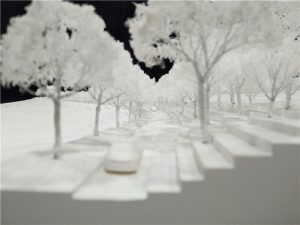
- Working architecture model trees– It is the type created once you develop the idea of the design.
You can easily convert the concept into a working design model and address all the issues, such as design flaws among others.
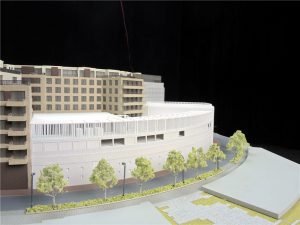
- Presentation architecture model trees– It refers to the final model design or the actual representation of the project.
Mostly, this is the type usually used to present the ideas to clients.
Chapter 4:
How can you obtain or prepare them for your projects?
Building models is both an art and a science. The most prolific model makers are the ones who can take any material at their disposal and understand their intrinsic and extrinsic properties.
Then, they transform them into something aesthetically engaging and functional within the context of the project.
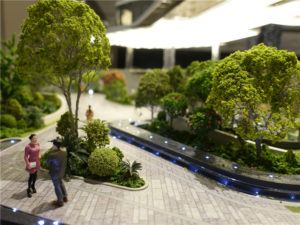
Below are some options that model makers can use.
They can use these to pepper their miniature model masterpieces with beautiful little trees, breathtaking landscapes, and natural-looking sceneries. They can even create an iconic tree that may steal the limelight!
Utilizing Everyday Objects
Architects, artists, designers, and model makers are amazingly resourceful. They have such keen eyes and incredible imagination.
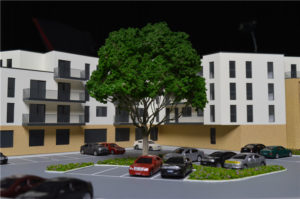
They can look at any physical object and instantly reimagine how to use them in their projects and what they could represent.
Hobbyists, students, educators, or architectural firms with projects on a shoestring budget can dramatically transform everyday items into beech trees, pine trees, fir trees, palm trees, and whatnot. Take a look at some homemade video tutorials. You will be amazed at the endless possibilities!
Getting Ready-Made Trees
This next option is for projects that are on a tight deadline, have a strict budget, or have standard requirements for model trees.
You can easily find common tree models like palm trees or pine trees off the shelf of your favorite model suppliers or on online shops like TL Models.
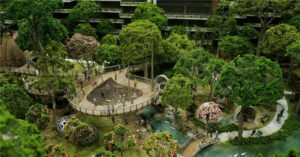
These model-trees-in-a-box options can come in sets or individual items that are ready for purchase and ready for installation right after unboxing.
No assembly or setup time is required. Although, if the architecture model trees come with a spigot, to plant your trees, you may still need to drill appropriately sized holes.
Using Complete Tree Kits
For projects with sufficient budget, sufficient time, you can use scale model tree kits.
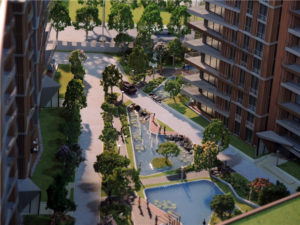
These kits give you all the materials and tools you need to create your miniature tree with flexibility and versatility.
Mixing & Matching Tree Armatures & Foliage
This option is quite similar to the previous one. The difference is that this provides a balance between leveraging time and money as well as your creativity.
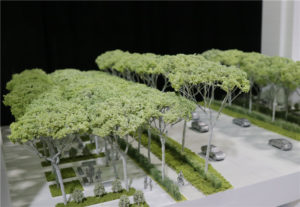
It allows you to model individual trees or a large dense forest.
You can buy several different kits or one huge specialized kit with various materials, scale sizes, and foliage.
Then, you can mix and match a wide array of armatures and foliage types in endless combinations.
With your imagination as the limit, you can model any tree, species, conifer, or deciduous to your satisfaction.
Ordering Custom-made Trees
Sometimes, you want architecture model trees that are highly specialized or quite difficult to model.
At other times, you do not have the resources to build it on your own. Consider ordering them from architectural model trees specialists who can custom-build it for you.
If you have the time and money, hire the services of specialized professionals like TL Models. You can order with the most realistic, professional, and accurate scale model trees that fit your needs and are closest to your creative vision.
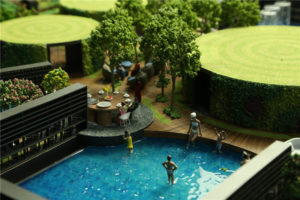
It makes these tailor-made trees the best option to create the most beautiful models.
3D Printing Technology
3D printing technology is in growing popularity, cost-efficiency, versatility, and speed.
Thus, model makers have used this to create highly custom model elements that are often difficult to come by.
With its vast capabilities, 3D printing has now become a go-to option for most architects, engineers, designers, and model makers.
Chapter 4.1:
What Is The Cost Of Making Architecture Model Trees?
It varies based on several factors surrounding the production of architectural model trees, such as the following;
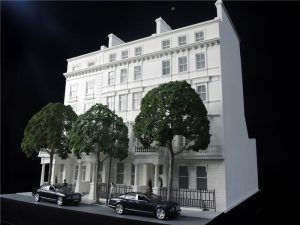
Build size – Ordinarily, bigger architectural model trees are likely to be more expensive than smaller ones.
In essence, the former utilizes more resources, materials, and time to accomplish than the latter.
Details – If you need the model to contain as many details as possible, it will likely cost more than one with basic information.
Moreover, architecture model trees with complex design is more expensive than one with a simple layout.
Material – Architecture model trees are produced using different materials. However, these materials vary in cost significantly.
Brand – Different model makers often charge different product rates depending on a wide range of existing factors.
Thus, you are likely to find some companies charging higher rates than others and vice versa for these models.
Modeling method - Technically, you can use different modeling methods to make different architecture model trees.
However, different techniques provide varied quality of the finished product, thus influencing the overall cost.
In essence, there is no definite price for making architecture model trees.
It varies based on a wide range of factors, including the above-mentioned ones.
Chapter 4.2:
What Information Should You Provide For Making Architecture Model Trees?
It varies based on different elements.
Ordinarily, model makers always request as much information as possible depending on the nature of your model.
Of course, the more information you can provide, the better the architecture model trees you will likely get.
Some of the details you can provide include exact site plans that portray the boundaries of the design.
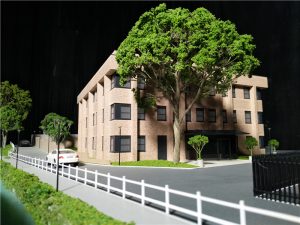
You can also give aerial or ground photos of the site, cladding materials, color references, and contrast materials among others.
In other words, the model makers always assess the project and request all the necessary basic details, which would be ideal if you provide.
Chapter 4.3:
What Is The Production Turnaround For Making Architecture Model Trees?
It is dependent on a wide range of factors surrounding the model and process.
Usually, every architectural model is unique based on different elements.
As such, the production turnaround is likely to vary since each utilizes different timelines depending on the details, simplicity, and complexity.
Moreover, the method of producing your preferred architecture model trees also determines the actual lead-time.
For instance, 3D architectural model trees may take a few days and up to 2 weeks to complete.
Ordinarily, this is often dependent on the type of software used, printer, and competence of the designer.
Nevertheless, most architecture model trees often take between 2 weeks to produce, depending on the details required.
In a nutshell, though, there is no definite turnaround time for making these models.
Mostly, it depends on existing commitments of the service provider and the above-mentioned factors.
Chapter 4.4:
What Factors Do You Consider When Seeking Architecture Model Trees?
It is vital to always look into several elements when seeking architecture model trees.
In most instances, these elements enable you to make the right choice and ultimately get best results.
These factors are pretty several, but the main ones include the following;
- Type of material– Essentially, architecture model trees are made from various materials, including paper, wood, resin, thermoplastic, etc.
Thus, it is necessary always to consider the specific material since it plays a significant role, especially as far as quality of the final product is concerned.
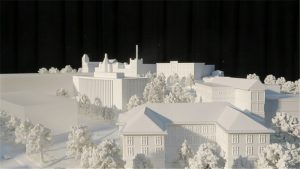
- Customization– Often, architecture model trees are customized to meet your specific requirements.
This usually happens by capturing and adding all the relevant and important details.
Therefore, you need to figure out the specific information to be incorporated in your architecture model trees.
- Build size– Ordinarily, these models come in different sizes. Mostly, the ideal size is determined by several factors, including your preference.
As such, it is vital to establish the correct build size when seeking architecture model trees.
- Modeling method– In many instances, the specific modeling method for making architectural model trees vary based on several factors.
Nonetheless, it is an important consideration you should never overlook when seeking this service and product.
Chapter 5:
What are the widely used architecture model tree scales?
Architectural scale models of buildings and structures are often the focus element of a miniature masterpiece. Yet, scale model trees are by no means less significant to the impact of the project.
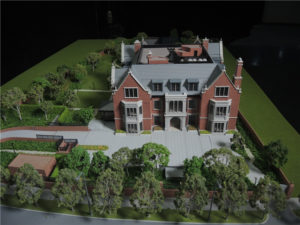
High-quality scale model trees add life and greatly enhance the realism, texture, and perspective of dioramas, layouts, displays, and projects.
The greater the variety in shapes, sizes, colors, and types you use, the more realistic your scenery will become.
However, the key to this dramatic realism is getting the appropriate scale of model trees to use. Only then can adding architecture model trees enhance the proportionality, realism, professionalism, and impact of the entire project.
Chapter 5.1:
1:5 to 1:25
This large scale is perfect for interior architectural model trees for commercial and residential real estate marketing collaterals.
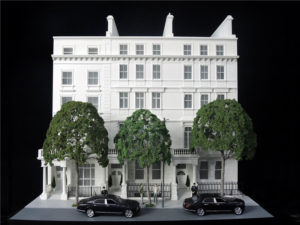
They are practical for designing interior spaces to impress buyers and close the sale.
Its large size allows designers and model makers to work in more details for things like indoor and small potted plants.
Chapter 5.2:
1:25 to 1:100
This scale range is useful for showing either interior or exterior architecture model trees and plants. It is perfect for villas and clubhouses.
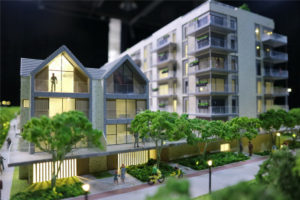
It is a large enough scale to draw attention and showcase design details of the living environment that may otherwise be unnoticeable in smaller-scale projects.
Chapter 5.3:
1:50 to 1:400
Large residential and commercial building model trees often use this scale range. Big and high-rise buildings and commercial office projects need to present open spaces, surroundings, and common areas. But they do not need the level of details used in interior design. So, this is a more suitable scale range for their purpose.
This scale range is perfect for model trees for hotels, resorts, shopping centers, office buildings, etc. It is small enough to present the entire project buildings, structures, and the surrounding sceneries.
Yet, it is large enough to be able to highlight some details that can impress principal investors and clients alike.
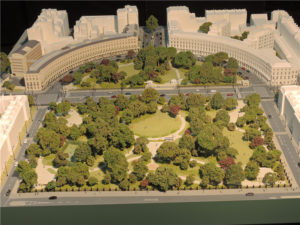
Single structures can use 1:50 and up to 1:200 scale sizes and use architecture model trees with more texture and details.
Much grander projects and developments with large sites use much smaller scales around 1:200 to 1:400 and can do well with less detailed scale model trees.
However, courtyards, open spaces, or landscapes are more prominent in such cases.
Chapter 5.4:
1:100 to 1:5000
This wide range of scale sizes has multiple applications. On one end, it is perfect for bringing attention to the finer details of a beautiful landscape, interior garden, or courtyards. On the other hand, it is ideal for a 10,000-foot view of a vast space. Think of a small island, open fields, natural terrains, and development sites that span several hectares.
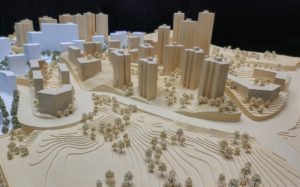
It is also perfect for masterplan models. It enables model makers to add a much wider variety of flora and fauna, vegetation, and topographical details.
It can include multiple landforms or water forms like valleys, rivers, and lakes surrounded by fine architectural model trees. It is perfect for making breathtakingly inspiring projects.
Chapter 5.5:
1:500 to 1:2000
This mid-scale range is perfect for urban and suburban planning.

Architects and city planning engineers use this scale for master plan models.
It is large enough to feature the scale model trees, parks, landscapes, and preserved natural green spaces that are often part of the strict requirements.
Chapter 5.6:
1:24; 1:48; 1:87; and 1:160
Finally, the railroad architectural models utilize these quite unusual scales because of the ready availability of commercial figures, vehicles, and buildings in these scales due to size considerations.
So, because of its extraordinary yet traditionally preserved scale ratio, model experts have made special sets of model trees that are perfect for this use.
This type of display includes trains and tracks, streetcars and signposts, tunnels and bridges, mountains and hills, and may also have rivers and lakes, cliffs, and canyons.

All these make it a truly unique model to gaze and admire.
Chapter 5.7:
What Is The Ideal Size Of Architecture Model Trees?
There is no limitation as far as the suitable size of architecture model trees is concerned.
Essentially, different users always have various preferences regarding size of these designs.
Thus, you can find it in different sizes depending on what suits your demands or preference.
Nevertheless, it is vital to note that when using 3D printing modeling technique, the printer can limit the size of this model.
In many instances, most 3D printers can only print these objects to a limited size.
However, you can decide to print the models in smaller pieces and join them manually to create bigger models if need be.
Chapter 6:
Which methods and materials are most common?
Architectural model trees elevate the aesthetic beauty of any model projects. The various kinds of methods and materials used play a role in achieving that end.
The decision to use which ones depends on the factors we mentioned in Chapter 3 of this article.
Model tree makers have mostly used traditional methods for the last several years.
They have used materials such as strings, twisted wires, scattered materials, wood, paper, and etched brass.
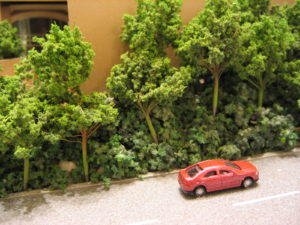
They also use ready-made plastic tree models or assemble them with different metal armatures and a variety of foliage.
With the demand for architectural models rising, companies have learned to mass-produce ready-made trees, tree kits, or custom- orders.
Model makers can choose from a wide range of model tree types and varieties. They are available in different scale sizes, shapes, colors, textures, and even in various seasons.
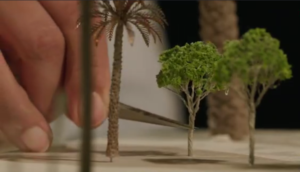
Model makers can then mix and match them for superior realism.
Today, model makers have used 3D printing technology and created model trees out of resin, plastic, powder, metals, etc.
They consider several available options to economically model any tree or forested area within the right time frame and budget to fit the requirements of the clients.
Chapter 6.1:
What Are The Common Materials Used For Making Architecture Model Trees?
You can use a wide range of materials to make different types of architectural model trees.
Mostly, the specific one depends on the type of architecture model you are creating.
In other words, you can always use different materials to make such models depending on the exact type of model.
For instance, you can use different materials for concept architecture model trees, working architecture model trees, or concept presentation architecture trees.
Nevertheless, the common materials usually used for making these models include the following;
- Resin
- Acrylonitrile Butadiene Styrene (ABS)
- Wood
- Prime gray
- Nylon
- Full color
Chapter 6.2:
What Are The Main Modeling Types Of Architecture Model Trees?
You can use several types of modeling to make architecture model trees.
However, the specific type is often based on the material you are using to make the model.
Some of the leading modeling types of this model include the following;
Stacking Paper
In some instances, you can elegantly create architecture model trees by using a sheet of paper.
This involves artfully folding or cutting the paper to form the desired shape.
You can use stacks of paper to carve into or bound together and create an unexpected feeling of depth.
Casting Concrete
This modeling process involves several steps making it relatively cumbersome and can be really messy.
However, it is one of the simplest ways to make architecture model trees.
You can get any finish you’d want with a bit of finesse.
Carving Timber
It is also an ideal technique for making architecture model trees.
This modeling method is somewhat trickier since finely finished carvings need a sculptor’s touch.
Even so, with little patience, you can produce great architecture model trees using this method.
Casting Resin
You can always cast resin to create outstanding architecture model trees.
However, it involves relatively several steps such as dying, curing, and finishing among others.
Harnessing 3D Printing
3D printing models is arguably the most suitable way of making highly sophisticated architectural model trees.
This method uses quality 3D printers, which can add color and rich diagrammatic layer of necessary information.
Nonetheless, it is quite expensive, and the preparation of the digital file can be time-consuming.
Thus, it is often considered for highly resolved and detailed presentation architecture model trees.
Chapter 6.3:
How Long Can Architecture Model Trees Last?
It is often dependent on a wide range of variables, which include but not limited to the following;
Specific material used – Ordinarily, you can make architecture model trees using various materials such as ABS, resin, wood, paper, etc.
However, some of these materials are stronger and resistant to many unfavorable elements hence last longer than others.
Type of modeling – Different modeling techniques also yield architecture model trees with varying lifespans.
For instance, 3D printing would yield more durable architect model trees than paper stacking.
Environmental conditions – Architectural model trees exposed to moderate environmental conditions are likely to last longer than those subjected to harsh conditions.
Types of additive integrated – During modeling process, different strength additives are usually added to reinforce the strength of the model.
However, the specific additive integrated determines the actual durability of the particular architectural model.
Generally, most of these models are designed to last for a relatively long period.
However, the actual durability is based on the above-mentioned factors among other notable ones.
Chapter 6.4:
Can You Alter Details When Creating Architecture Model Trees?
Yes.
However, this is often dependent on the specific modeling approach you are using to design the model.
For instance, this is relatively easy when using 3D architectural modeling since it uses software, making it easy to edit the details.
Thus, you can permanently alter the details as many times as possible until you find what suits your requirements.
Conclusion
Architecture model trees are not just beautiful additions to architectural models. They are not used purely for aesthetic and artistic reasons.
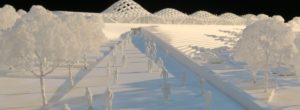
They have specific valuable functions in model making. That is why they come in certain types, sizes, and materials.
You can always build trees on your own or from common model construction materials. But sometimes you have requirements that require finer details.
It's the perfect time to enlist the help of professional model trees makers like TL Models for all your ready-made or bespoke architecture model trees.






